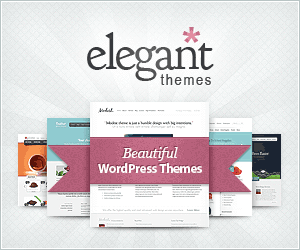Web Design and Search Engine Optimization: 5 Best Practices
Why Web Design and Search Engine Optimization Matter
The synergy between web design and search engine optimization is crucial for a successful online presence. Combining these elements ensures that your website not only looks great but ranks well in search engines, attracting more visitors and potential customers.
Key Points:
– A well-designed website improves user experience, keeping visitors engaged and more likely to convert.
– SEO integrates with design to make a site more visible on search engines, driving organic traffic.
– Prioritizing user-friendly design features like easy navigation and fast loading times improves SEO performance.
My name is Randy Speckman, and I’ve dedicated my career to merging web design and search engine optimization to help small businesses grow. At Randy Speckman Design, we’ve worked with over 500 entrepreneurs to build websites that not only reflect their brand but also maximize online visibility and customer engagement.

Understanding Web Design and Search Engine Optimization
When building a website, understanding the fundamentals of web design and search engine optimization (SEO) is essential. These two elements work together to ensure your site is both user-friendly and easy for search engines to find and rank.
SEO Fundamentals
At its core, SEO is about making your website more visible to search engines like Google. This means using the right keywords, having a clean site structure, and ensuring your content is relevant and valuable to your audience.
- Keywords: These are the terms people type into search engines. By including relevant keywords in your content, you help search engines understand what your site is about.
- Content Quality: High-quality content keeps visitors on your page longer, which can improve your rankings. Google values content that is helpful and well-written.
- Link Building: Having other reputable sites link to your content can boost your site’s credibility and improve its ranking.
Web Design Basics
A well-designed website is not just about aesthetics. It’s about creating a seamless experience for users. Here are some basics:
- Responsive Design: Your site should look good on all devices, from desktops to smartphones. This is crucial as more people browse the web on mobile devices.
- Navigation: Visitors should easily find what they’re looking for. A simple menu and clear call-to-action buttons are key.
- Visuals: Use images and videos wisely to engage users, but ensure they are optimized for fast loading times.
Site Structure
Think of your website like a library. If books (or in this case, pages) are scattered everywhere, it’s hard to find what you need.
- Hierarchy: Organize your pages in a logical order. Use categories and subcategories to help users and search engines steer your site.
- URLs: Keep them simple and descriptive. A clear URL helps search engines understand the content of your page.
- Internal Linking: Connect related pages within your site. This helps users find more content and helps search engines crawl your site more effectively.

By mastering these elements, you set the foundation for a site that not only looks great but performs well in search results. This combination is crucial for attracting visitors and turning them into customers.
Next, we will explore the Key Elements of SEO-Friendly Web Design, diving deeper into technical SEO, mobile-friendliness, and more.
Key Elements of SEO-Friendly Web Design
Creating a website that excels in both design and search engine optimization (SEO) requires focusing on several key elements. These include technical SEO, mobile-friendliness, page speed, and usability. Each plays a crucial role in ensuring your site is not only visually appealing but also ranks well in search engine results.
Technical SEO
Technical SEO is the backbone of a well-optimized website. It involves optimizing the infrastructure of your site to help search engines crawl and index your pages efficiently. Here are some essential aspects:
- Crawling and Indexing: Ensure your site is easy for search engines to crawl. Use a clean and logical site architecture, and create an XML sitemap to guide search engines through your content.
- Secure and Accessible: Use HTTPS to secure your site and make it accessible to both users and search engines.
- Structured Data: Implement structured data (schema markup) to give search engines more context about your content, which can improve your visibility in search results.
Mobile-Friendliness
With more users accessing websites via mobile devices, mobile-friendliness is non-negotiable. Google rewards mobile-friendly sites with higher rankings, making it essential to prioritize this aspect.
- Responsive Design: A responsive design ensures your website adapts to any screen size, providing a seamless experience across devices.
- Mobile-First Approach: Start designing with mobile devices in mind, then expand to desktop. This approach aligns with Google’s mobile-first indexing, where the mobile version of your site is considered the primary version.
Page Speed
Page speed is a critical factor in both user experience and SEO. Slow-loading pages frustrate users and can lead to higher bounce rates, negatively impacting your search rankings.
- Optimize Images: Compress images to reduce load times without sacrificing quality. Use formats like WebP for better compression.
- Minimize Code: Reduce the size of your HTML, CSS, and JavaScript files. Tools like Google’s PageSpeed Insights can help identify areas for improvement.
- Efficient Hosting: Choose a reliable hosting provider that ensures fast load times and minimal downtime.

Usability
Usability focuses on creating a user-friendly experience that keeps visitors engaged and encourages them to explore more of your site.
- Intuitive Navigation: Simplify your site’s navigation to help users find what they’re looking for quickly. Use clear labels and logical menu structures.
- Readability: Choose fonts and colors that are easy to read. Break up content with headings, bullet points, and white space to make it more digestible.
- Engaging Design: Use visuals and interactive elements to improve user engagement, but ensure they don’t slow down your site.
By integrating these key elements into your web design and search engine optimization strategy, you create a site that’s not only beautiful but also functional and findable. This balance is essential for attracting visitors and converting them into customers.
Next, we will dig into the Best Practices for Integrating SEO and Web Design, exploring responsive design, content optimization, and more.
Best Practices for Integrating SEO and Web Design
Integrating web design and search engine optimization seamlessly is key to building a website that ranks well and delights users. Here’s how you can achieve this:
Responsive Design
Responsive design is all about making your website look great on any device, from smartphones to desktops. It’s important because Google rewards mobile-friendly sites with higher rankings.
- Fluid Grids and Flexible Layouts: Use fluid grids and flexible layouts that adjust according to screen size. This ensures users have a consistent experience no matter the device.
- Media Queries: Implement CSS media queries to apply different styles based on device characteristics. This helps your site adapt to various screen sizes and resolutions.
Content Optimization
Content is king, but only if it’s optimized. Well-crafted content boosts your SEO and keeps users engaged.
- Keyword Integration: Naturally incorporate relevant keywords into your content. Avoid keyword stuffing, which can harm your rankings.
- Quality and Relevance: Focus on creating high-quality, relevant content that answers users’ questions and meets their needs. Search engines prioritize content that satisfies search intent.
Internal Linking
Internal linking is a powerful tool for both users and search engines. It helps users steer your site and allows search engines to understand your site’s structure.
- Descriptive Anchor Text: Use descriptive anchor text for internal links. This gives users and search engines context about the linked content.
- Strategic Placement: Place links to important pages throughout your site. This improves user navigation and spreads link equity to boost page rankings.
Accessibility
Making your website accessible ensures everyone, including those with disabilities, can use your site effectively. Accessibility is not just good practice; it’s often a legal requirement and can improve your SEO.
- Alt Text for Images: Provide descriptive alt text for images to help visually impaired users and improve image indexing by search engines.
- Keyboard Navigation: Ensure your site can be fully steerd using a keyboard. This is essential for users who rely on assistive technologies.
- Contrast and Readability: Use high-contrast colors and legible fonts to improve readability for all users.
By following these best practices, you can create a website that’s not only visually appealing but also optimized for search engines. This integration of web design and search engine optimization ensures your site is both user-friendly and findable.
Next, we will explore how to measure the success of your web design and SEO efforts, focusing on key metrics and user engagement.
Measuring Success in Web Design and SEO
Once your website is up and running, it’s crucial to track how well it’s performing. This involves looking at various SEO metrics, understanding user engagement, and analyzing conversion rates. Let’s explore each of these areas to see how they can help you measure the success of your web design and search engine optimization efforts.
SEO Metrics
SEO metrics are your compass in the digital world. They tell you how well your site is doing in search engines and where you need to improve.
- Organic Traffic: This is the number of visitors coming to your site through search engine results. A steady increase in organic traffic shows that your SEO strategies are working.
-
Bounce Rate: This metric shows the percentage of visitors who leave your site after viewing only one page. A high bounce rate might indicate that your site content isn’t engaging or relevant.
-
Keyword Rankings: Track how well your target keywords are ranking in search engine results. Higher rankings mean better visibility and more traffic.
User Engagement
User engagement is about how visitors interact with your site. Engaged users are more likely to convert into customers.
- Average Session Duration: This shows how long visitors stay on your site. Longer sessions typically mean that users find your content valuable.
- Pages Per Session: This metric indicates the number of pages a visitor views during a single session. More pages suggest that users are exploring your site and finding it interesting.
Conversion Rates
Conversion rates are the ultimate measure of success for any website. They show the percentage of visitors who take a desired action, like making a purchase or signing up for a newsletter.
- Goal Completions: Set up goals in tools like Google Analytics to track specific actions, such as form submissions or downloads. This will help you see how well your site converts visitors into leads or customers.
- Conversion Funnel Analysis: Analyze your conversion funnel to identify where users drop off. This can highlight areas for improvement in your web design or content strategy.
By focusing on these metrics, you can gain valuable insights into how well your web design and search engine optimization efforts are paying off. The goal is to create a seamless experience that not only attracts visitors but also engages and converts them.
Next, we’ll address some frequently asked questions about web design and SEO, helping you better understand their roles and impact on your site’s performance.
Frequently Asked Questions about Web Design and Search Engine Optimization
What is SEO web design?
SEO web design is all about creating websites that are both beautiful and easy for search engines to understand. It’s the art of blending aesthetics with functionality to boost your site’s visibility online.
When you integrate SEO into your web design, you ensure that search engines can easily crawl and index your site. This means using clean code, optimizing images, and creating a logical site architecture. Think of your website as a library. SEO web design ensures that every book (or page) is easy to find and read, both by visitors and search engines. This not only improves your site’s visibility but also improves the user experience.
How does SEO affect web design?
SEO and web design are like peanut butter and jelly—they work best together. When you consider SEO from the start, you lay a solid foundation for your website.
-
Site Architecture: A well-structured site helps search engines understand your content. It also guides users smoothly from one page to another. Imagine walking through a well-organized store where everything is labeled and easy to find. That’s what good site architecture does for your website.
-
User Experience (UX): SEO affects how users interact with your site. Fast page speeds, mobile-friendliness, and easy navigation all contribute to a positive UX. When users find what they need quickly, they stay longer and are more likely to return.

Do web designers handle SEO?
Web designers often play a crucial role in integrating SEO into your site. However, not all designers are SEO experts. Here’s how it typically works:
-
SEO Services: Some web design agencies, like Randy Speckman Design in Tri-Cities, WA, offer comprehensive SEO services as part of their packages. They understand the importance of SEO and build it into the design process from the start.
-
Web Design Roles: In other cases, web designers focus primarily on the visual and structural aspects of a site. They may collaborate with SEO specialists to ensure that the site is optimized for search engines. It’s like building a house: the designer creates the blueprint, and the SEO expert ensures that the house is energy-efficient.
Understanding the roles and responsibilities in web design and SEO can help you choose the right team for your project. Whether you’re working with a full-service agency or a separate SEO consultant, make sure everyone is on the same page about your goals for web design and search engine optimization.
Next, we’ll wrap up our discussion with insights into how Randy Speckman Design can help optimize your digital strategy for better conversion rates.
Conclusion
At Randy Speckman Design, we believe that web design and search engine optimization should work hand-in-hand to lift your digital strategy. Our approach is not just about making a website look good—it’s about ensuring it performs well, too. We specialize in creating high-performing websites that are not only visually appealing but also optimized for search engines. This dual focus helps businesses in Tri-Cities, WA, and beyond to stand out in the crowded online marketplace.
Digital Strategy is at the heart of what we do. We understand that a successful website is one that aligns with your business goals. That’s why we incorporate SEO from the ground up. By doing so, we ensure that your site is not only attractive but also functional and easy to find. This strategy involves everything from optimizing site structure and content to ensuring fast page speeds and mobile-friendliness.
Conversion Optimization is another key aspect of our service. We know that driving traffic to your site is just the beginning. The real success lies in converting those visitors into customers. Our team uses proven techniques to improve user experience and encourage conversions. This includes clear calls-to-action, intuitive navigation, and engaging content that keeps users coming back.
In summary, our goal at Randy Speckman Design is to help your business thrive online. By integrating web design and search engine optimization, we create websites that not only attract visitors but also convert them into loyal customers. If you’re ready to take your digital strategy to the next level, explore our web design optimization techniques and see how we can help you achieve your goals.




